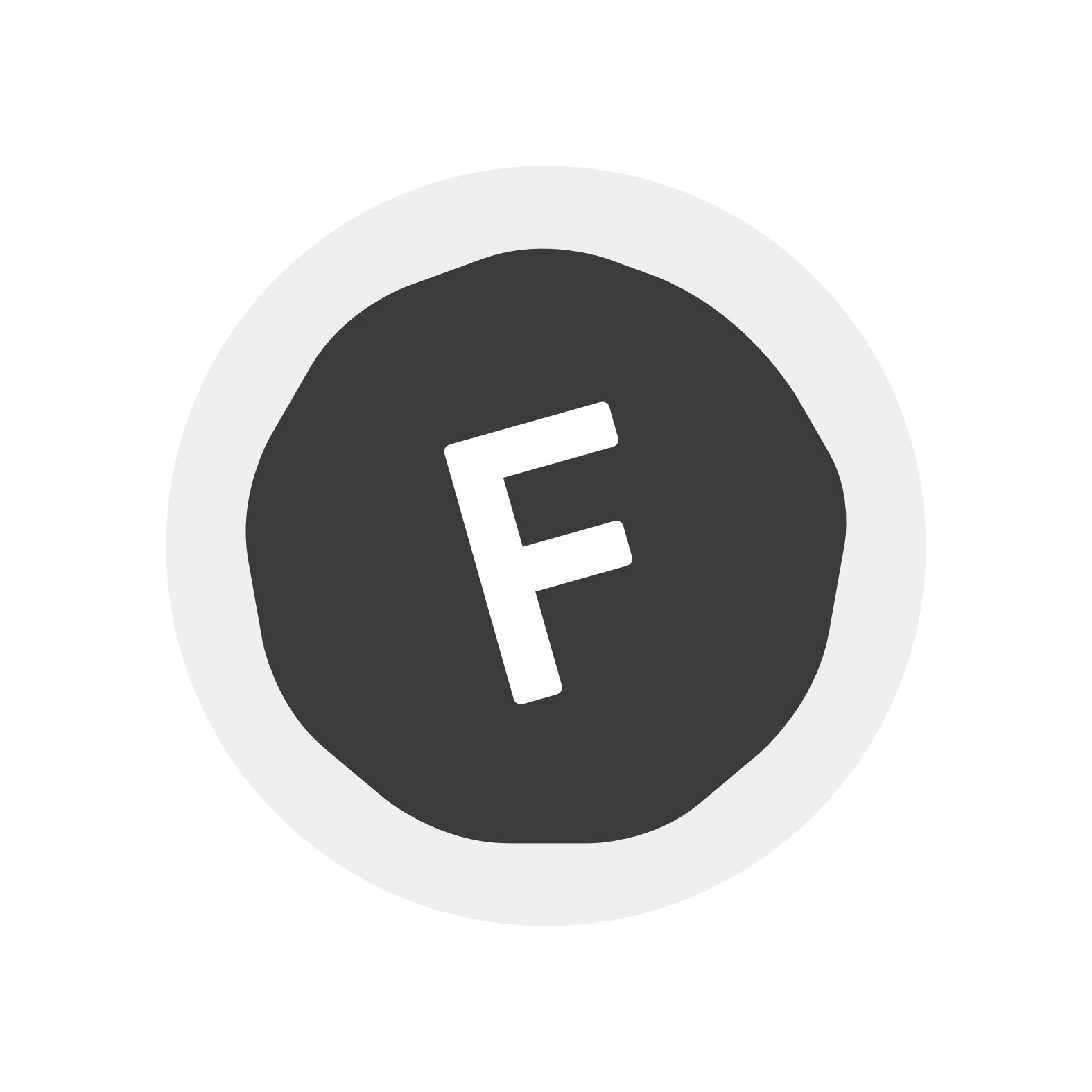-
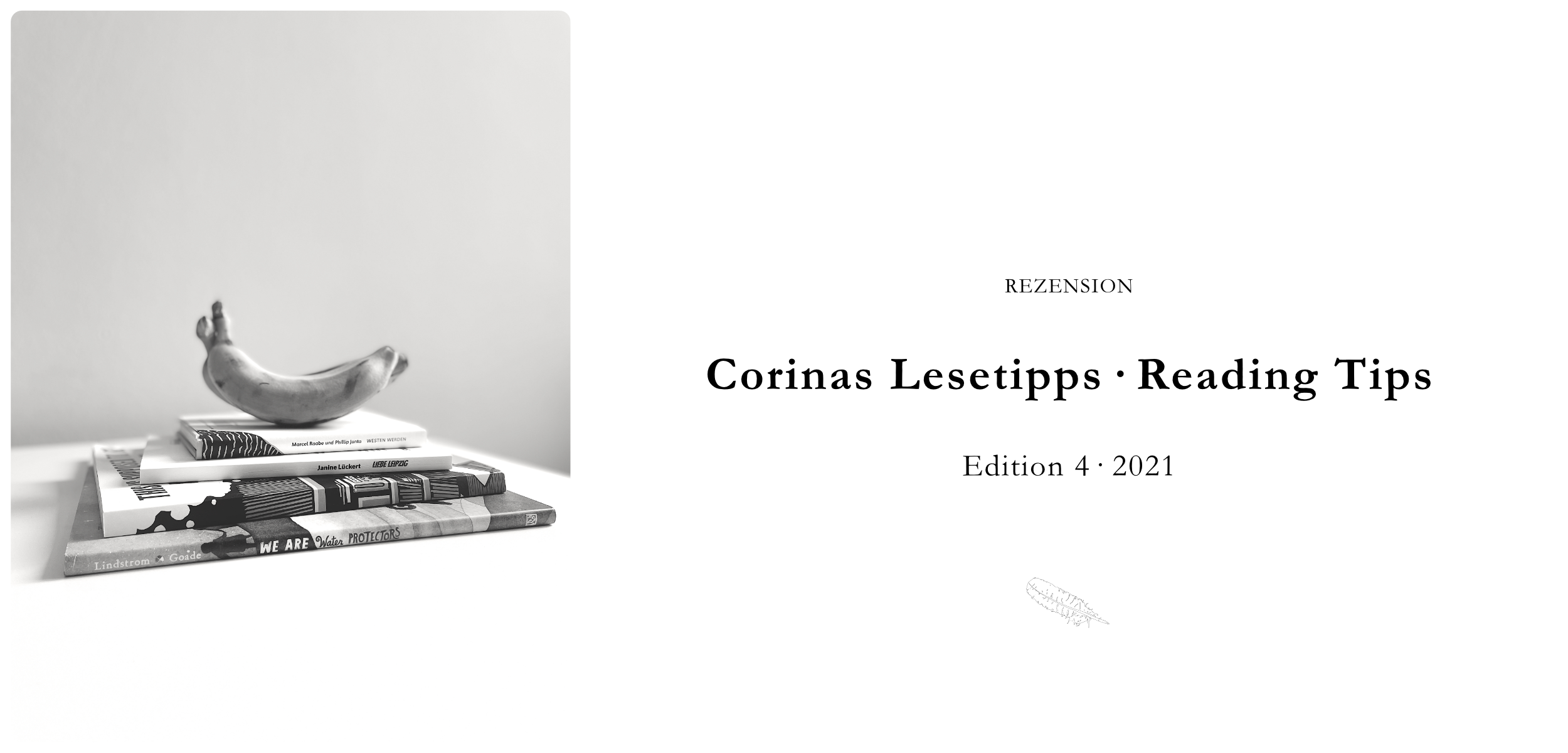
Nachdem mir kürzlich in einer Leipziger Buchhandlung auf die Frage nach explizit Leipziger Autoren ausschließlich Lene Voigt wärmstens empfohlen wurde, dachte ich, ich müsse nun auch das mal selbst in die Hand nehmen: ein Shout-out an die durchaus noch quicklebendig unter uns weilenden tollen Leipziger Autoren und Autorinnen, deren Werke ich teilweise hier auch schon vorgestellt habe oder es ab sofort tun werde. Von manch einem unter euch habe ich bereits alle Bücher gelesen, von einigen einige und den einen oder die andere habe ich erst kürzlich entdeckt und lieben gelernt. So auch Marcel Raabe und sein Buch Westen werden, das Philipp Janta richtig toll illustriert hat. Es steckt voller Erinnerungen an eine bewegte Zeit, die mich beim Lesen sehr oft schmunzeln, nicken und sentimental zurückblicken ließen. »Ich erinnere mich an den Walkman. … Der Walkman schloss den Himmel auf. Er roch nach Schmiere und Plastik und die Kassettenmagnetbänder irgendwie technisch, ölig, metallisch, süßlich, staubig. Ich erinnere mich auch an den Geruch von Intershops.« Na und ich erst! Also, dieses Buch: kleine Auflage, große Kunst!
Und weiter gehts mit literarischen Neuentdeckungen aus der Pleißestadt. Janine Lückerts Liebe Leipzig habe ich geschenkt bekommen, denn jemand kennt jemand kennt jemand kennt Luzie Holzgräbe, die dieses coole Buch wundervoll illustriert hat. Hui, dieses Buch fetzt! Und das nicht, weil Leipzig so toll ist, wie immer alle finden, die hier frisch gestrandet sind. Nein, es rockt, weil es der Autorin echt gut gelungen ist, die eher schwierige und vielleicht sogar rückläufige Entwicklung dieser Stadt in den letzten zwanzig Jahren sehr humorvoll, emotional und vor allem kritisch zu beschreiben. In Gedanken bin ich mit ihr die Straßen und Viertel, die ich selbst wie meine Westentasche kenne, entlanggegangen und habe mich gern an zurückliegende Zeiten in unsanierter Leichtigkeit erinnert. Doch dann kommt sie, die Frage: Bleiben oder gehen?
We Are Water Protectors written by Carole Lindstrom and illustrated by Michaela Goade is a fantastic children’s book when it comes to environmentalism and the Indians‘ point of view. The artwork really is beyond beautiful and if it wasn’t about a very serious topic, reading the book would be pure joy. »We fight for those Who cannot fight for themselves: The winged ones, The crawling ones, The four-legged, The two-legged, The plants, trees, rivers, lakes, The Earth. We are all related« is my favorite quote.
I enjoy reading artist biographies so This Is Supposed To Be A Record Label by Frans De Waard was my purchase when Ro and I finally made it into the Staalplaat record store in Berlin last summer. The author was an employee at Staalplaat for eleven years and gives the reader many insights – or not. I enjoyed reading about some of my favorite artists and their releases on Staalplaat. Furthermore, it was interesting to learn about creative processes back then and how the label started out. Remembering that day in the record store I am happy to announce that the Staalplaat spirit from the 80s is still alive somehow.
-
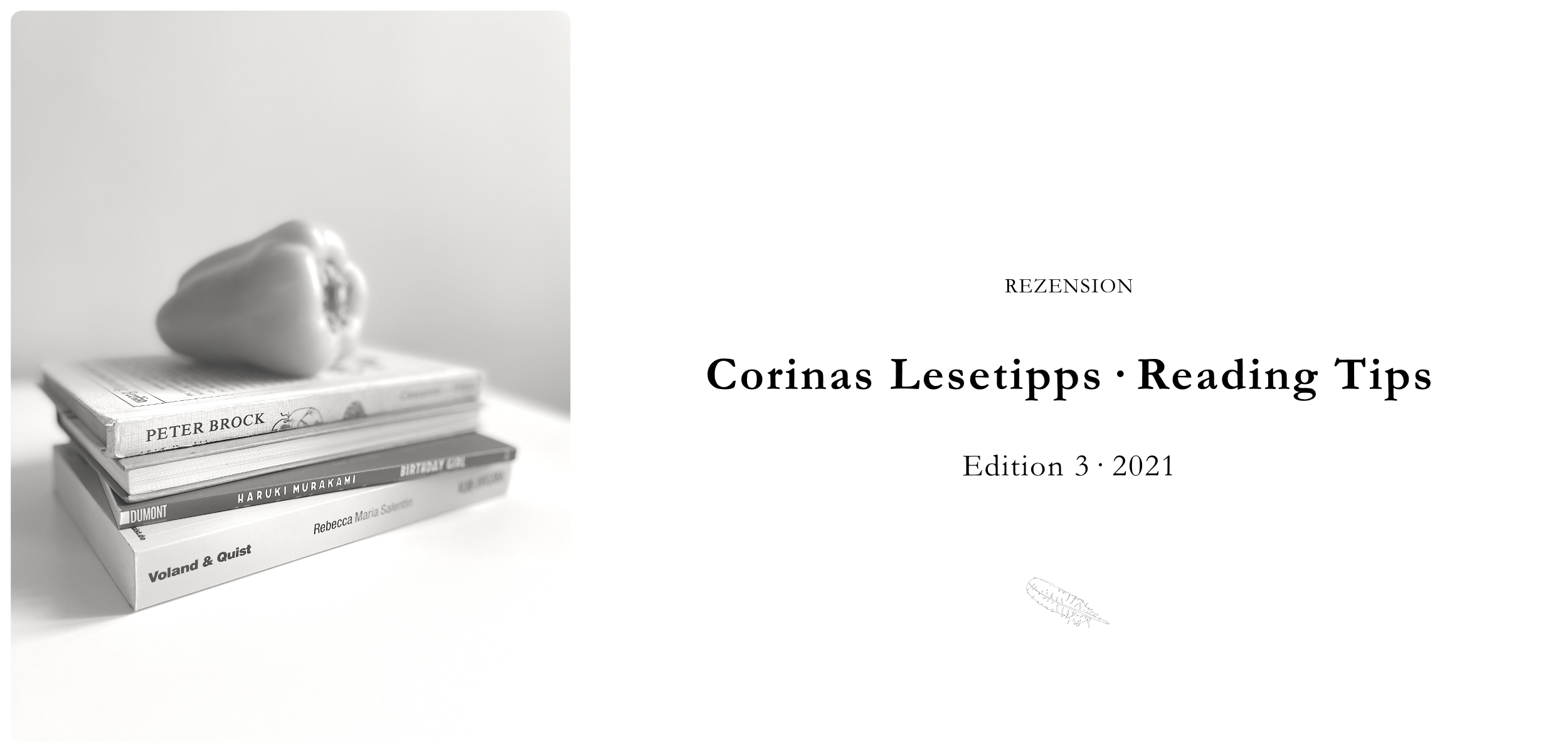
Es gibt da diesen kleinen Buchladen in meinem Lieblingsort an der Ostsee, in dem ich bei jedem Besuch eine tolle Lektüre für mich entdecke. Meist schaue ich lange und wäge ab, welches Buch es sein soll. Doch dieses Mal entschied ich mich schnell. Haruki Murakamis Birthday Girl mit Illustrationen von Kat Menschik sollte es sein, hatte ich doch vor zwei Jahren erst ein Buch aus dieser Kollaboration gelesen. Birthday Girl ist für mich ein nahezu perfektes Buch: Die Geschichte ist einfach erzählt, regt zum (langen, möglicherweise ewigen) Nachdenken und Philosophieren an, und die Illustrationen sind so unglaublich toll, dass man das Buch einfach immer wieder anschauen möchte. Meine Lieblingsstelle im Buch ist: »›Ein Mensch wird nie mehr, als er ist.‹ Sie lachte laut, sichtlich vergnügt, und der Schatten war plötzlich verschwunden.«
Jeden Samstagmorgen höre ich im Radio eine Sendung, in der Menschen von ihren manchmal sehr verrückten Reisen und den da erlebten Abenteuern erzählen. Dieses Mal verpasste ich allerdings den Anfang, sodass ich nicht gleich mitbekam, wer der Studiogast war. Über das restliche Interview hinweg puzzelte ich mir dann jedoch die Person förmlich zusammen und war total begeistert, als ich herausfand, dass es Rebecca Maria Salentin war, die Initiatorin und ehemalige Chefin des ZierlichManierlich – einem kleinen Bauwagencafé und noch dazu vielleicht sogar mein liebstes in Leipzig überhaupt! Ich lauschte gespannt den Schilderungen ihrer Eindrücke, die sie auf ihrem 2700-km-Fußmarsch auf dem Weg der Freundschaft von Eisenach bis Budapest gesammelt hatte, und freute mich, dass ich in Klub Drushba einerseits ihre Wandererlebnisse nachlesen und andererseits sie selbst auch ein wenig kennenlernen konnte. Ich war so neugierig auf das Buch, dass ich es kaum erwarten konnte, es zu lesen – also schenkte mir mein lieber Mann das letzte Exemplar, das am Sonntag neben leckerem Kaffee und Kuchen noch im ZierlichManierlich verfügbar war. Und, was soll ich sagen? Ich habe das Buch verschlungen, ist es doch sehr spannend, anschaulich und humorvoll geschrieben. Manche Gegenden kannte ich sogar und weiß nun, wie es beispielsweise hinter den mir so vertrauten Bergen von Hřensko aussieht. Außerdem: Als gut trainierte Kurz(!)streckenwanderin bewundere ich Rebecca für ihre Leistung, alle Hürden auf diesem Weg (und in ihrem bisherigen Leben) so gut gemeistert zu haben. »Viel Spaß bei der Lektüre« steht handschriftlich in meiner Ausgabe. Vielen Dank, liebe Rebecca, den hatte ich auf jeden Fall (und vielleicht liest du das ja hier)!
Frauen, die die Kunst revolutioniert haben von Valentina Grande und Eva Rossetti hatte die Verkäuferin nach eigener Aussage erst am Morgen ins Schaufenster gestellt gehabt. In einer weiteren kleinen Ostseestadt hatte ich nicht damit gerechnet, so präsent (oder überhaupt) mit einer Graphic Novel über feministische Kunst konfrontiert zu werden. Ich verstand es als Wink und kaufte das Buch. Und las das Buch. Und recherchierte nach. Und sprach über das Buch. Ich liebe Künstlerbiografien, und dieses Buch ist neben wundervoll anzusehenden Illustrationen auch eine wirklich tolle Übersicht über verschiedene Künstlerinnen aus dem 20. und 21. Jahrhundert und allen Teilen der Welt. Sie haben auf verschiedene Arten – sei es durch ihre Kunst an sich, durch Proteste/Performances oder selbstbestimmtes Handeln – die Veränderung der Wahrnehmung von Frauen in der Kunst mitbestimmt. Einige vorgestellte Künstlerinnen waren mir bereits vertraut, die Kunst anderer habe ich durch dieses Buch gar erst für mich entdeckt. Es ist eine große Inspirationsquelle, doch lässt es mich auch erneut mit der Frage zurück, ob Quoten tatsächlich das Non-Plus-Ultra sind oder ob nicht eher ein respektvoller Umgang mit allen Menschen und der Fokus auf die Kunst oder das Schaffen an sich zielführender für ein harmonisches Miteinander sind. Das Buch ist im Rahmen des Book Chain Projects entstanden, das sich für eine ethische und nachhaltige Produktion einsetzt.
In den 1980er Jahren habe ich Peter Brocks Gestatten-Oskar geschenkt bekommen und erstmalig gelesen. Nun habe ich das Buch in meiner Sammlung alter Kinderbücher wiedergefunden und dachte, ich lese es nochmal, denn ich wusste zunächst gar nicht mehr, worum es in diesem Buch ging. Doch schon nach den ersten Sätzen erinnerte ich mich, konnte fast Satz für Satz voraussagen und sogar die lustige Geheimsprache, die Oskar und seine Freunde erfanden, wieder abrufen. Herrlich! Ich glaube sogar, danach selbst eine entwickelt oder zumindest die Löffelsprache intensiv mit meinen Freundinnen gesprochen zu haben. Dieses Buch hat mich gut an meine eigene Schulzeit erinnert, mich mit lustigen Charakteren gut unterhalten und über die echt coolen Illustrationen natürlich zum einfachen Skizzieren von Menschen animiert.
-
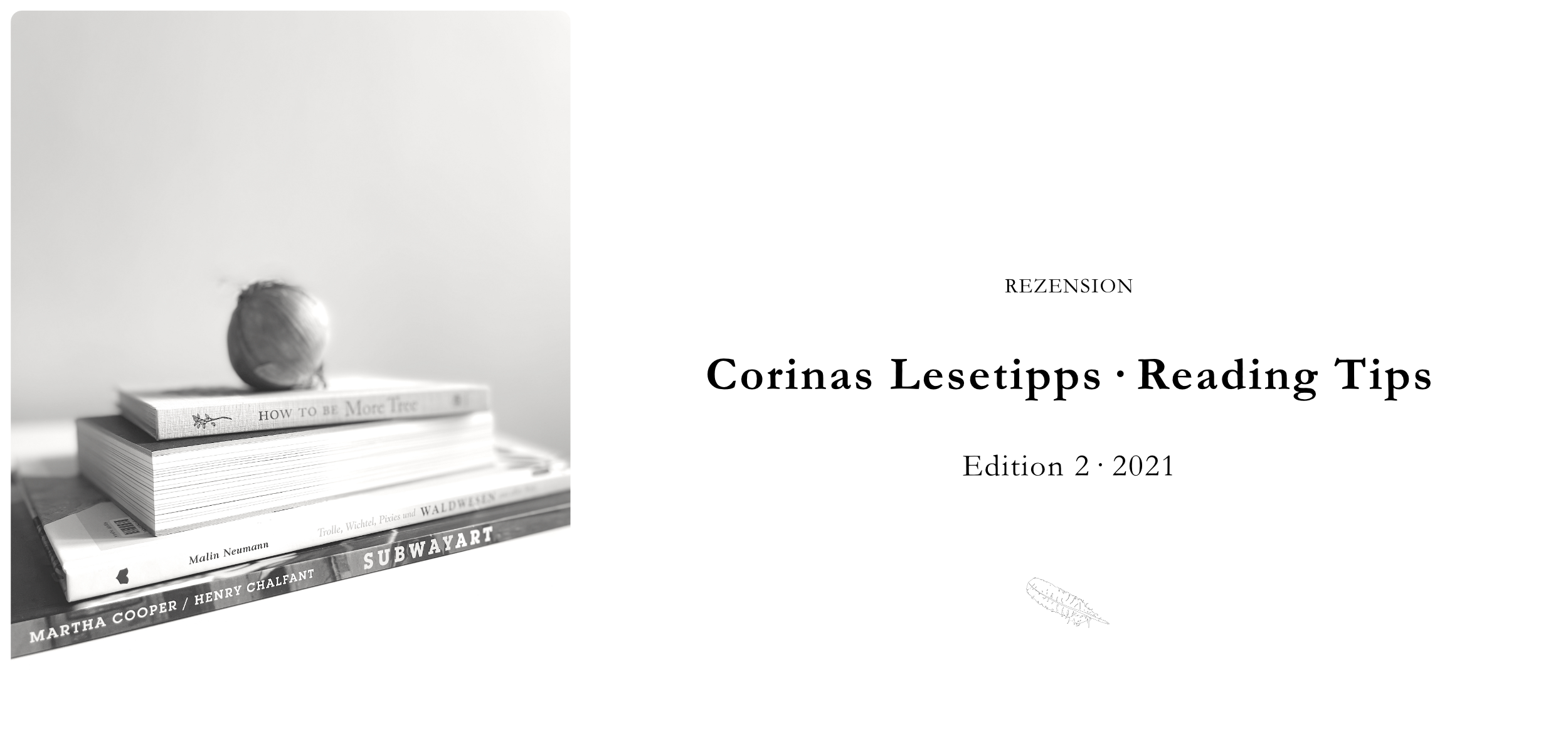
Letztes Jahr habe ich die Comic-Version von Marc-Uwe Klings Qualityland gelesen und war fasziniert und – sagen wir mal – beeindruckt zugleich, wie greifbar nahe diese Utopie ist. Daher jetzt auch nur kurz: äußerst lesenswert! Der erste Teil (Sorry, Spoiler!) der Romanfassung spinnt den im Comic begonnenen Faden weiter und macht neugierig auf Teil 2, der eine meiner Sommerlektüren sein wird. Dieses Buch besteht aus Papier aus verantwortungsvollen Quellen.
Trolle, Wichtel, Pixies und Waldwesen aus aller Welt von Malin Neumann bekam ich geschenkt. Es traf auch sogleich genau meinen Nerv, denn dieses Buch stellt einerseits mystisch-mythische Wesen verschiedener (indigener) Ethnien vor. Andererseits begeistert es mit wundervollen Mixed-Media-Illustrationen, für die Wasserfarben, Gouche und Buntstifte verwendet wurden. Diese bezaubernden Bilder, die auch von der Autorin stammen, ergänzen nicht nur die Beschreibungen, sondern rahmen sie oftmals komplett. Damit ist das Buch aus meiner Erfahrung hervorragend für interkulturelle Projekte mit Kindern ab sieben Jahren geeignet. Gedruckt wurde auf Papier aus verantwortungsvollen Quellen.
I recently watched Martha Cooper – Königin der Street Art on ARTE. Actually, I watched it twice. Because: this woman rocks! Still not getting enough of her, I got her and Henry Chalfant’s book Subway Art. And a few more other books by her. This one is kind of a holy book for many street artists since it shows the maybe first graffiti on New York City subway trains in the late 1970s/early 1980s and kind of documents the street artist’s work (in progress) back then. Looking at these stunning artworks I am very impressed by the way how accurate many street artists worked given the fact that they were under so much pressure not getting caught. Well, if you are into street art, you will enjoy this book.
How To Be More Tree – Essential Life Lessons for Perennial Happiness by Liz Marvin with illustrations by Annie Davidson is a little gem I was introduced to in my fauna and flora painting group. I just love trees. When I was a kid I used to climb trees in our backyard, sometimes all the way up until I reached a certain rooftop, and while doing this also always all the way up our old neighbors‘ nerves, haha. Later on, when they cut eighteen old trees in front of my house to retrieve an old part of a river, I got myself a little spruce to grow on my balcony. And I even grow a birch there that I actually purchased as a tiny raspberry plant in the first place, haha. Well … I also wanted to have this book since the illustrations of the featured trees are beyond beautiful for my artist’s eye while the short texts on each tree give some insight into how cool and special these perennial plants actually are when it comes to their adaption to environmental processes.
-
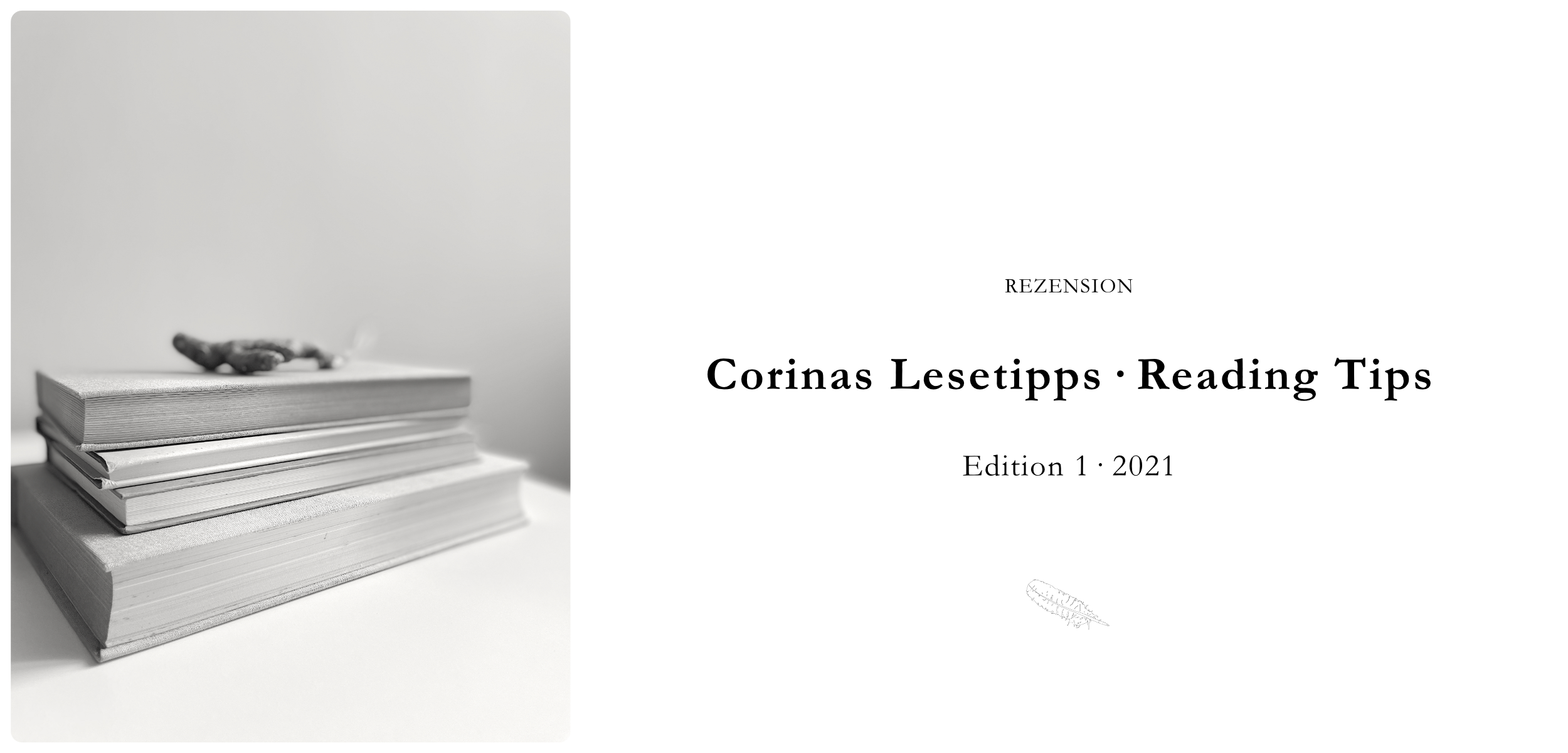
With Jojo Moye’s The Giver Of Stars, I was introduced to what I learned is called ChickLit. By the end of last year, I was looking for a nice novel to read and a friend of mine recommended this book. It is all about strong women in America’s 1930s who operate a library while delivering books to people living far out of town on horses. Just this fact, delivering books while riding on a horse, got me right away. I’ve also learned a lot about certain circumstances regarding marriage, work, parenthood, and racism – and with that, all the rather bad things women faced during this time. But the story has a happy ending, so everything is fine.
Not so with Oscar Wilde’s The Picture Of Dorian Gray. I’ve heard about this book so many times (and knew about the famous Dorian Gray club even longer) and needed a quick break from ChickLit anyway, so I squeezed that one in. It starts with one of my all-time favorite things to do: art. I also enjoyed Wilde’s take on beauty and how the character morphs over time – or doesn’t he and is it rather the painting? The atmosphere is a bit creepy and strange and sometimes dark, and it was rather hard to read what men thought about, talked to, and dealt with women in the late 19th century in England, but I enjoyed reading it and learning all about this classic anyway. My favorite quote is, »If a man treats life artistically, his brain is his heart (…)«
After that one, I went to India in the 1950s. The Henna Artist by Alka Joshi is another book that might fall into the genre ChickLit. It’s about that young woman who is trying to level up her carrier as a henna artist for the higher castes of India. Her life becomes quite different when first her ex-husband and then her teenage sister show up. This book was very interesting to read because I didn’t know that much about India’s caste society and culture yet, and again it was all about art and painting. With this book, I had wished for quite a few different turns, but the ending is kind of happy so I am fine with that. It also ends with an attached sequel, which to me is new when it comes to literature and which I didn’t enjoy that much.
The last ChickLit I read this winter was The Chicken Sisters by KJ Dell´Antonia. This one was all about two sisters getting into a fight when of them wants the two family-owned but competitive chicken restaurants to participate in a reality docu-TV duel these days. Well, one of the sisters is also an artist in painting, and the whole drama starts – in my opinion – when one of her paintings that once served as some kind of a trademark is no longer appreciated. There are several dramatic turns in that one, but in the end, the characters work out everything.
Well, after reading three ChickLit books in almost a row, I have to say that this genre is entertaining and makes me feel good. I like reading about artists and their art, and I like to learn about the lives of women in different cultures and times. But now I’d like to dive into something completely different…
-
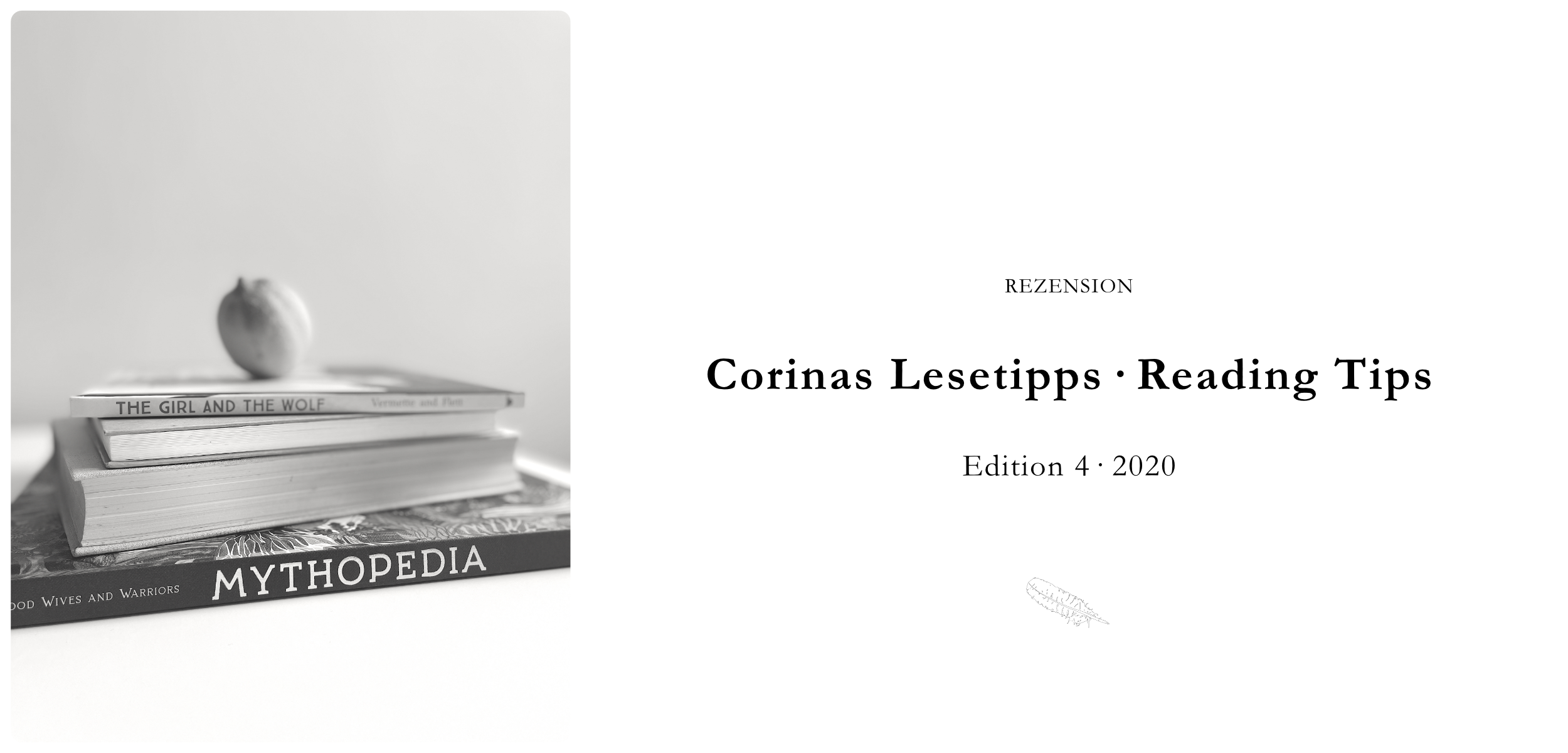
Walden by Henry David Thoreau was on my reading list for years already. I approached it a couple of times but didn’t finish it until this year. I always wanted to know about the hype this book brought to the world and why it is a must-read for people interested in alternative lifestyles. Plus, I find it very interesting how people manage life in the woods in general. So to this question, I got some answers. But besides that, I found it rather shocking than inspiring that the intentions and motivations Thoreau got living in a forest for two years are still relevant these days because society hasn’t changed that much since the 1850s. My top four favorite quotes from this book are, »But I would say to my fellows, once for all, As long as possible live free and uncommitted. It makes but little difference whether you are committed to a farm or the county jail.« This one is followed by, »I have learned that the swiftest traveller is he that goes afoot.« Next is, »I found that, by working about six weeks in a year, I could meet all the expenses of living.« And lastly, »Simplify, simplify.«
Always looking for indigenous literature, I came across The Girl And The Wolf by Katherena Vermette, with pictures by Julie Flett. And I have to say, I just love this book. Guys, imagine a world where all animals are equal and no creature is scorned for their looks or natural behavior! Wouldn’t that be a peaceful life for everybody?! So besides the author’s uplifting view on a wild animal, this book is filled with such beautiful artwork that I just could read it over and over again. This book is made of paper from responsible sources.
Mythopedia von Good Wives and Warriors lese ich gerade. Es erzählt von den unterschiedlichen Fabelwesen, die es in verschiedenen Kulturen auf der Welt gibt. Mit diesen Wesen sind magische Geschichten verbunden, die sehr spannend sind, werfen sie doch einen besonderen Blick auf all die faszinierenden Weltbilder und Entstehungsmythen, die jedes (indigene) Volk sich über viele Jahrhunderte bewahrt hat. Doch ganz abgesehen von den tollen ethnologischen Inhalten öffnet auch die kreative Gestaltung dieses Buches jedes Mal aufs Neue mein Künstlerherz. Mir gefällt der grafische Stil – diese Mischung aus kräftigen Farben und natürlichen Formen verbunden mit geometrischen Elementen und Goldprägungen – außerordentlich gut. Jede Seite enthält mehr oder weniger ein riesiges fantastisches Wimmelbild, das unzählige Darstellungen aus Flora und Fauna der entsprechenden Ethnie zeigt. Einfach wundervoll!
I adore Jane Fonda not only for her work as an actress and sometimes for her sportsmanship too, her activism (despite her advanced age) just amazes me. So I read What Can I Do – The Truth About Climate Change And How To Fix It in one go right after it was published. In many ways, this book is really eye-opening and then also pretty devastating when it comes to the facts told about the condition of our planet, Mother Earth. But, this book is also full of good ideas and links to actions you can take yourself right away, so please read it, share it and do so with Sam Waterston in mind, who said, »What looks like radical today is actually moderation, given the size of the problem itself and the time we have left in which to slow it down.«
-
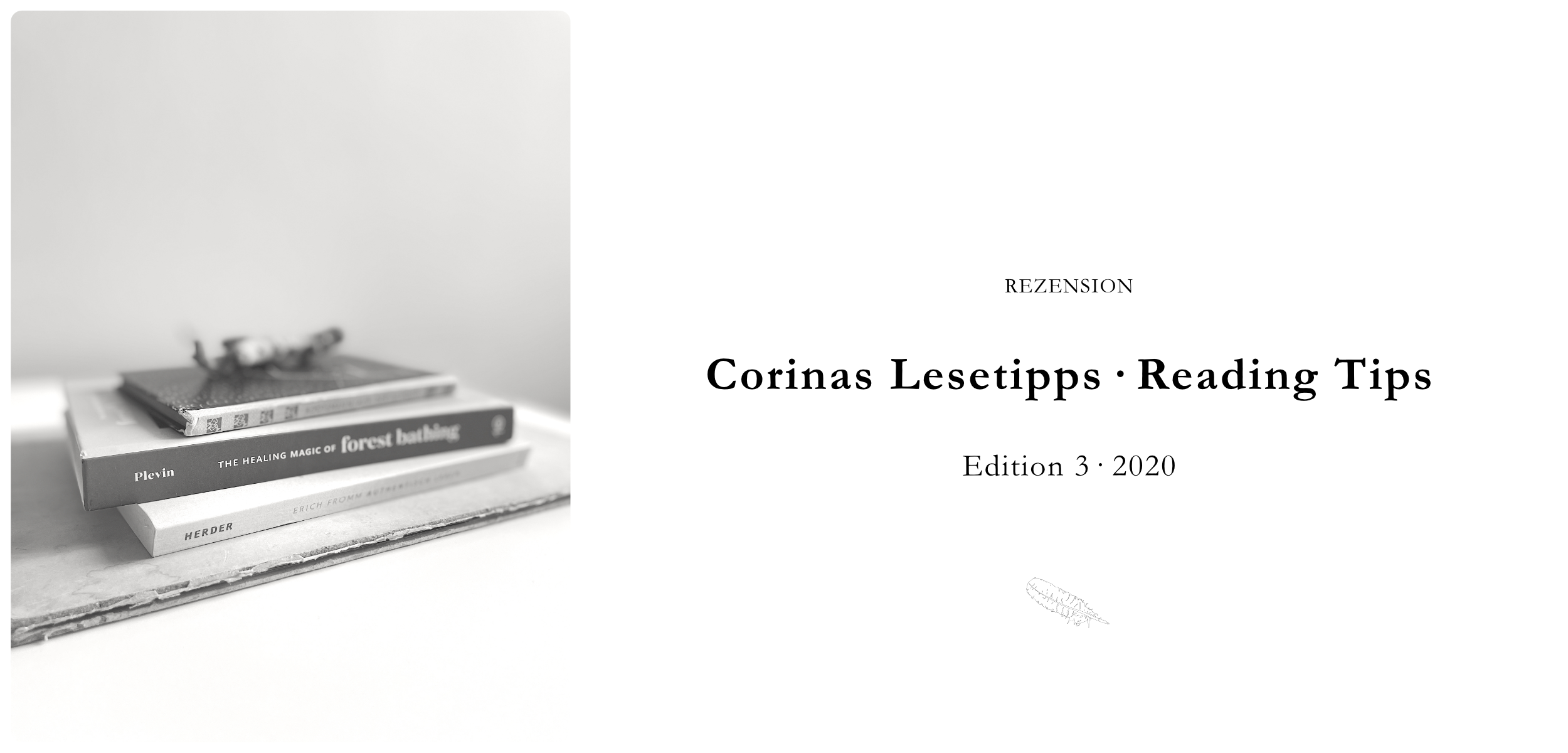
Ein Buch von Erich Fromm zu lesen, ist für mich immer wieder Herausforderung und Inspiration zugleich. Dies trifft auch auf Authentisch Leben zu: Es ist eine stilistisch anspruchsvolle Lektüre, die mich aber vor allem aufgrund ihrer anhaltenden Aktualität – Fromm schrieb die Mehrheit der einzelnen Beiträge in der ersten Hälfte des 20. Jahrhunderts! – sehr beeindruckt hat. Fromm spricht hier die einzelnen Aspekte eines fremdbestimmten Lebens mit Rollenfunktion(en) an und führt Punkte auf, wie der Mensch wieder zu mehr Selbstbestimmung finden kann und was ihn als echtes Individuum ausmacht. »Das Gefühl der Isolierung und Ohnmacht des heutigen Menschen wird noch durch den Charakter seiner menschlichen Beziehungen verstärkt. Die konkreten Beziehungen zwischen den Menschen haben ihren unmittelbaren und humanen Charakter verloren. Statt dessen manipuliert man einander und behandelt sich gegenseitig als Mittel zum Zweck. In allen persönlichen und gesellschaftlichen Beziehungen gelten die Gesetze des Marktes.« Diese Zeilen formulierte Fromm vor über vierzig Jahren, doch sie treffen nach wie vor auf viele Gesellschaften zu – eine Tatsache, die mich schon recht nachdenklich stimmt. Dieses Buch besteht aus Papier aus verantwortungsvollen Quellen.
The Healing Magic Of Forest Bathing by Julia Plevin is a wonderful book I am currently reading. (Not because of the hype!) I very much like the format, layout, and beautiful pictures. It really is a joy to look at. I am not even halfway through, but I already love the author’s holistic approach to nature. I myself just found my magic spot in the riparian forest I live close by for almost my whole life just a couple of weeks ago and figured out that while everyday life can get very mixed up, nature has its own recurring rhythms you can trust. Just like that. Maybe that’s one reason why it is so grounding to be in nature. This book is made of paper from responsible sources.
Während Marc-Uwe Klings Känguru-Chroniken hier bei finetexts kontrovers diskutiert werden, besteht bezüglich Qualityland Einigkeit: richtig guter Lesestoff. Dieses Comic mit Illustrationen von Zachary Tallent ist eine unterhaltsame Momentaufnahme der Gegenwart und all ihrer (zwischenmenschlichen und konsumorientierten) Abgründe. Beim Lesen habe ich oftmals laut gelacht und mich anschließend aber auch gleich wieder gefragt, ob das alles wirklich nur lustige Fantasien des Autors sind oder ob er nicht vielleicht tatsächlich eine unheimliche Zukunft à la Black Mirror beschreibt, in die die Menschheit schon einen Fuß gesetzt hat. Das Comic basiert auf dem gleichnamigen, aber ausführlicheren Roman, der nun auch auf meinem Lesestapel wartet.
Benno Pludras Bootsmann auf der Scholle ist ein DDR-Kinderbuch-Klassiker. Ich habe dieses Büchlein in einer Kiste am Fluss vor meinem Haus gefunden – wie passend – und konnte es dort dann nicht zurücklassen. Es erzählt die Geschichte von drei jungen Kindern und einem kleinen Hund, die an einem schönen Wintertag draußen am Binnenmeer miteinander spielen. Allein. Ohne die Aufsicht von Erwachsenen. Wie toll! Bis leider etwas schiefläuft. Doch die Kids sind clever, wissen sich zu helfen, und am Ende ist alles gut. Sehr spannend – auch für Erwachsene. Und die Illustrationen von Werner Klemke: wundervoll!
-
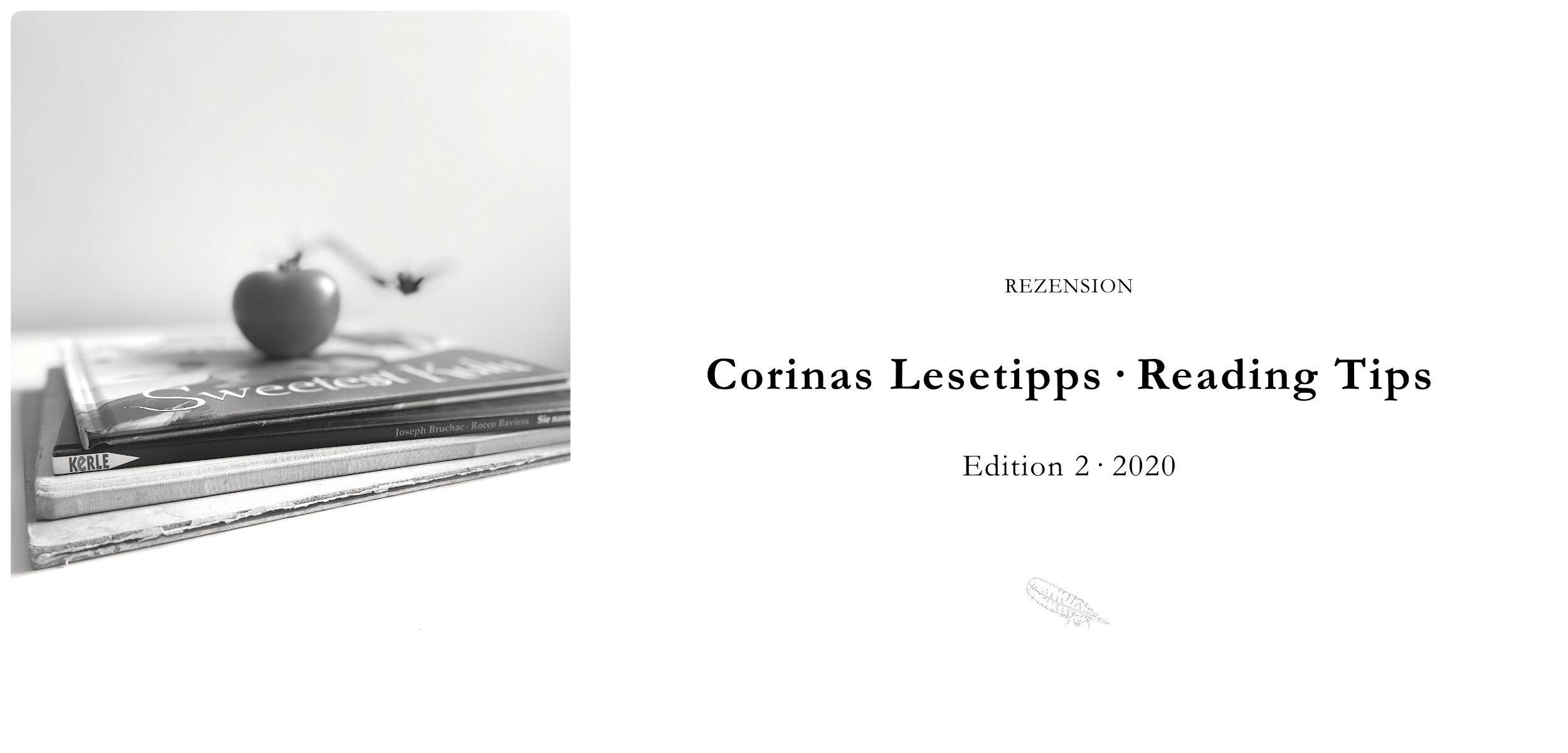
Auf der Suche nach einem Geburtstagsgeschenk für unsere siebenjährige Nichte stießen wir auf Peter Wohllebens Weißt du, wo die Baumkinder sind?, das Stefanie Reich illustriert hat. Bereits durch andere Bücher und einen Film des Autors begeistert von seinem Engagement für die Natur, fiel die Entscheidung für dieses Kinderbuch dann leicht. Um jedoch sicherzugehen, ob es für das Geburtstagskind auch wirklich passt, habe ich es zunächst probegelesen. Und dabei hat mir besonders gefallen, dass der Autor leicht verständlich und nachvollziehbar die aktuelle Situation des Waldes erklärt. Er äußert seine Gefühle diesbezüglich klar, aber dezent und richtet den Fokus immer wieder auf nachhaltige Alternativen. Diese haben mich als Leserin mit einem Gefühl der Hoffnung das Buch beenden lassen. Für die Herstellung wurde zertifiziertes Papier aus verantwortungsvollen Quellen verwendet.
I have been following Violet Plum’s blog for quite some time now and I really like her approach to veganism through comics. So I recently got her comic book The English Family Anderson which I loved a lot. The story is pretty cool and little did I know that there were (spoiler alert!) ghosts involved! This was a surprising twist since the story started out quite differently. Pretty cool! My favorite line is right in the beginning when seven-year-old Brietta Anderson tells about her dad who was a postman, »One day when he was delivrin his letters he saw some horribul peepul who wanted to shoot some luvly birds and he was worrying about the birds so he snached the guns and ran as fast as he could.«
Always on the lookout for Native American/First Nation art, I came across Celina Kalluk’s Sweetest Kulu. It is such a wonderful story about all the gifts the spirits of nature and free-roaming animals came to give to the newborn Kulu. And those illustrations by Alexandria Neonakis! So beautiful! Well, my favorite part is, when the polar bear says that humans are supposed to always be respectful of animals. Also, following the artist’s IG, I learned that this book has been to space! Woohoo, this is huge!
Sie nannten ihn Slonh-he. Die Geschichte des Sitting Bull von Joseph Bruchac, versehen mit Bildern von Rocco Baviera, ist mein liebstes deutsches Kinderbuch über die Kindheit und Jugend des Lakota-Häuptlings Tȟatȟáŋka Íyotake (Sitting Bull). Wann immer ich in ein interkulturelles Fest, das auch die Kultur der Indigenen Nordamerikas berücksichtigte, involviert war, habe ich Kindern aus dieser Geschichte vorgelesen. In ihr gibt der Autor einerseits Einblicke in die Kultur eines verschwindenden Volkes und erzählt andererseits vom Helfen und besonderen Gaben sowie von Mut und weisen Entscheidungen.
-
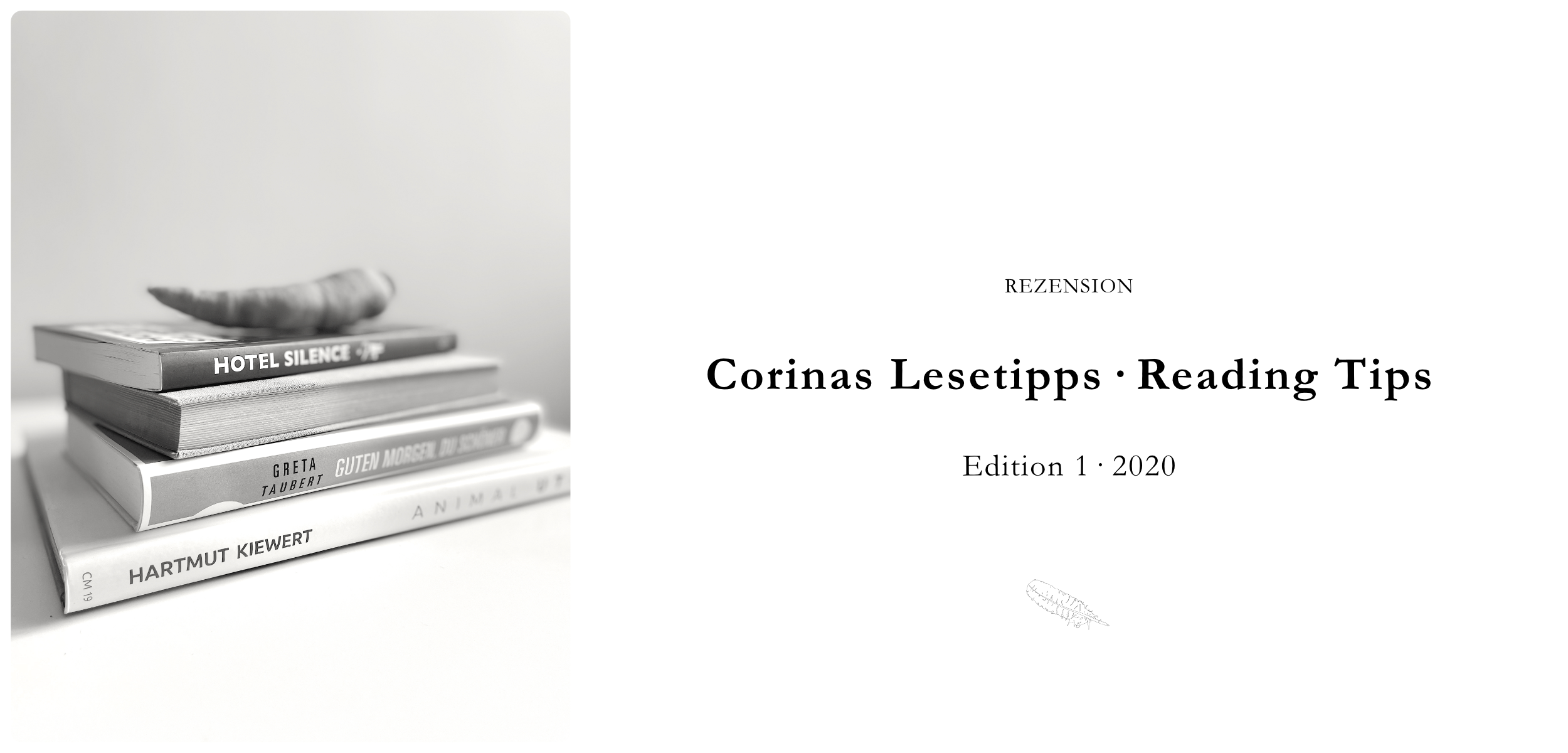
Anfang 2020 war ich in Hartmut Kiewerts Ausstellung Animal Utopia. Seine Ölgemälde, die ein natürliches, nicht auf Masse und Nutzen reduziertes Zusammensein mit Tieren thematisieren, haben mir sehr gut gefallen. Sie zeigen glückliche Tiere, die sich im städtischen oder ländlichen Raum frei bewegen und Seite an Seite mit Menschen leben – fern von Massentierhaltungsanlagen und Zuchteinrichtungen. Das gleichnamige Buch, das auch Bilder der Ausstellung enthält, beleuchtet alle Facetten der Tierwohlgefährdung. Alle Texte sind in Deutsch und Englisch verfasst. Die Inhalte sind auf hundertprozentigem Recyclingpapier mit veganer mineralölfreier Farbe gedruckt und die Bindung ist vegan.
When I visited Island, I really wanted to dive deep into Islandic art and culture, so I bought some books by Icelandic writers I never heard of before and Hotel Silence by Au∂ur Ava Òlafsdòttir was one of them. Usually, after reading a novel, I part with the book. But this one I am going to keep since I liked it very much. My favorite line is, »He points at a sign behind him. ›Silence saves the world‹, it says.«
Für Guten Morgen, du Schöner interviewte Greta Taubert sechzehn ostdeutsche Männer. Mit diesen Portraits wollte sie zeigen, dass nicht alle so seltsam, unfreundlich oder trottelig sind, wie sie in den Medien oft und gerne dargestellt werden. Ich finde dieses Buch sehr gelungen, denn es beinhaltet spannende Biografien und Selbstreflexionen, die durch interessante Fakten und Statistiken zum Thema ergänzt werden. Zu guter Letzt finde ich Greta Tauberts Schreibstil sehr unterhaltsam, wodurch die Einführungen zu jedem Interviewten sehr kurzweilig erscheinen. Dieses Buch besteht aus zertifiziertem Papier aus verantwortungsvollen Quellen.
I discovered Marie Kondo in 2016 and her KonMari method helped me to improve my already minimalist lifestyle. So when I learned about her recent book Joy at Work that she wrote with Scott Sonenshein I thought it could be a good addition. I am currently reading it and being halfway through I can say it’s quite interesting to learn about how Marie Kondo’s career started and how decluttering in an office can be done. However, Does it spark joy? is still the most important question. This book is made of paper from responsible sources.
